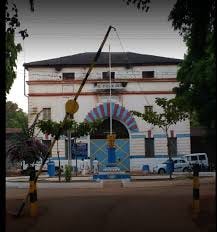What remains of Umesh?
On February 28th, 1998, Jayashri was found raped and murdered in her home. A police officer named Umesh was quickly arrested and named the main accused after a First Information Report (FIR) was filed.
Umesh was arrested on March 2nd, 1998. He was tried for murder, rape, and robbery. He was convicted, and the trial court sentenced him to die. After confirmation of his sentence in 2006, Umesh was transferred to Belgaum Central Prison and placed under solitary confinement. This was because Section 30(2) of the Prisons Act condemns Umesh, like other prisoners under sentence of death, to be "confined in a cell apart from all other prisoners" and to be placed under the charge of a guard 'by day, and by night.' But Umesh was not under a sentence of death.
In Sunila Batra v Delhi Administration, the Supreme Court read down Section 30(2) and added constraints to its operation because it was "a revolt against society's humane essence." Under Indian law, Umesh was not sentenced to solitary confinement, nor was he "under a sentence of death." He had only been *provisionally *awarded capital punishment, and under Indian law, his sentence was not officially a "sentence of death" until every avenue, every appeal, every remedy, and every possibility for an executive pardon had been extinguished. Section 30(2) would never, in fact, apply to Umesh and the final sentence would never come to pass. He should have never been in solitary, not even for a day.
But the warden of Belgaum Central Prison had not followed the law. And he would remain on death row, in complete solitary confinement, until the High Court of Karnataka granted him a stay on his execution. It would take nearly a decade for that to happen.
In Hellhole, writing for the New Yorker, Atul Gawande examined the question of whether solitary confinement was torture. He writes:
EEG studies going back to the nineteen-sixties have shown diffuse slowing of brain waves in prisoners after a week or more of solitary confinement. In 1992, fifty-seven prisoners of war, released after an average of six months in detention camps in the former Yugoslavia, were examined using EEG-like tests. The recordings revealed brain abnormalities months afterward; the most severe were found in prisoners who had endured either head trauma sufficient to render them unconscious or, yes, solitary confinement. Without sustained social interaction, the human brain may become as impaired as one that has incurred a traumatic injury.
The prisoners of war in Gawande's story were, at the most, in solitary confinement for six months. But the most egregious examples of long-term solitary confinement he cites are of persons with severe uncontrollable rage who cannot be kept in cells with other prisoners. Persons such as Bobby Delello. Within a few months of his confinement, Delello started to lose his mind. "He talked to himself. He paced back and forth compulsively, shuffling along the same six-foot path for hours on end. Soon, he was having panic attacks, screaming for help. He hallucinated that the colors on the walls were changing. He became enraged by routine noises---the sound of doors opening as the guards made their hourly checks, the sounds of inmates in nearby cells." He would go on to become completely catatonic, unable to behave or interact, incapable of being a person.
Bobby Delello was isolated only for five years. Umesh would remain in solitary for ten. Court records describe the conditions of his illegal incarceration. He was placed in a special section of the prison --- Andheri block --- where there are twelve cells. Only one of those cells was occupied. In ten years, Umesh was not permitted to leave his cell, except on three occasions. The first two times were yoga sessions. On the third, he was allowed, with other inmates, "to offer prayers to Lord Ayyappa."
Years after he was moved out of solitary and allowed to socialize with other inmates, Umesh was mentally evaluated. The Supreme Court's summary of the physician's report described his mental condition pithily, in one of the greatest understatements ever to be found in the history of Indian legal writing. It said he was "mentally ill."
The trial court had decided to punish Umesh with death for his heinous crimes. Instead, the State had unintentionally but consciously, methodically, over a decade, driven him mad. It had sunk him into such a deep psychosis and depression that he had given up on legal process and mercy petitions. The sheer slowness of the process, the disregard for the rule of law, and the unconscionable delay --- that thing researchers clinically describe as pendency or a *backlog --- *had played a part in sanctioning his insanity. In our name.
For these reasons, the Supreme Court of India granted him the following reprieve:
27. Considering the entirety of facts and circumstances on record, in our view, ends of justice would be met if while commuting the death sentence awarded to the appellant, we impose upon him sentence of life imprisonment with a rider that he shall undergo minimum sentence of 30 years and if any application for remission is moved on his behalf, the same shall be considered on its own merits only after he has undergone actual sentence of 30 years. If no remission is granted, it goes without saying that as laid down by this Court in Gopal Vinayak Godse vs. State of Maharashtra, the sentence of imprisonment for life shall mean till the remainder of his life.
I do not ask you to feel pity for Umesh or to condone his crimes. I ask only that you consider this. Unlike his victim, Umesh has, now, the remainder of his life. What really remains, though, of him?



